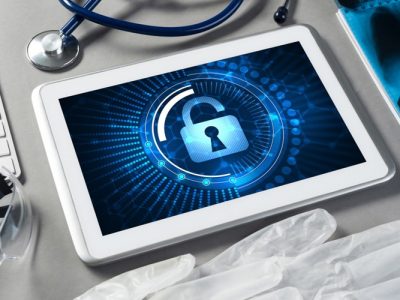
Cybersecurity in healthcare involves protecting electronic information and assets from unauthorized access, use, and disclosure.
In this tech-driven world, cybersecurity in healthcare and data protection are critical for enterprises to function normally. EHR systems, e-prescribing platforms, practice administration support systems, health information systems, radiology information systems, and computerized physician order entry systems are examples of specialized hospital information systems used by many healthcare companies. In addition, the Internet of Things plays a vital role in safeguarding data. Smart elevators, intelligent heating, ventilation, air conditioning (HVAC) equipment, infusion pumps, and remote monitoring devices are just a few examples.
Because they hold so much information of significant monetary and informational value to cybercriminals and nation-state actors, health care institutions are particularly vulnerable to being targeted by cyberattacks. Protected health information (PHI) of patients, financial information such as credit or debit card and banking data, personally identifiable information (PII) like Social Security numbers, even intellectual property relating to medical research and technology are among the data sets targeted. On the dark web, stolen health information may sell for up to ten times the price of stolen credit card numbers.
Solutions and Tips for improving Cyber security are:
Increase Budget
Healthcare spends very little on cybersecurity than other industries. In reality, in 2019, just 5% of their money was allocated to cybersecurity. While the government budget increased by $15 billion in only one year. In fact, this is more than 4% greater than their budget for 2018. However, recently the healthcare industry has already increased its spending on it.
Human Error
Human mistake is at the root of the bulk of data security issues.
Workload has a significantly positive link with the likelihood of healthcare workers opening a phishing email. Root cause analysis & cybersecurity incident prevention are lacking in the health industry, particularly for incidents caused by inadvertent human error.
Insider Threats
Job-based access management, in which a staff member’s role within the practice (e.g., surgeon, nurse, billing specialist) defines what information may be accessed, is one of the access controls that can be established. Thus limiting intentional leak of data.
Strong Passwords
Strong passwords are those that are difficult to guess. Because attackers may try to determine a password using automated methods, it’s critical to select a password that doesn’t have any features that may make it susceptible.
Limit Network Access
Wireless routers should be configured to only function in encrypted mode.
The best protection is to make casual access impossible. When configuring a wireless network, each valid device must be recognized to the router, and then the device may be granted access.
Control Physical Access
Environmental and physical protection should be addressed when deciding where to install a server carrying electronic health records (such as within an EHR). Unauthorized persons should not be allowed access to the server, hence physical security should be prioritized (e.g putting the servers in a secure area where only employees have access)
Plans for company continuity that aren’t appropriate
Vendor dependency, improper encryption setups, and the inability to manage healthcare information exchange and sharing with 3rd and cross-border partners are the main security concerns that threaten company continuity.
In comparison to other businesses, the health industry lacks advanced data security technologies.
Executive Leadership
Many healthcare organizations did not have designated cybersecurity executives. This should be addressed at the earliest.
Lack of security awareness
Frequent and continuous education and training are required. Those in charge of overseeing and directing others should lead by example and avoid the urge to be exceptional. One of the organization’s key principles should be accountability and accepting responsibility for information security.
Inadequate board-level risk assessment communication
A matrix that can transform a healthcare system’s strategic requirements into prioritized cyber-improvement needs is needed. There is indeed a lack of awareness of security threats and their influence on risk management across the enterprise. There is a dearth of understanding within healthcare executive management about the business risk implications of cyber-attacks.



















